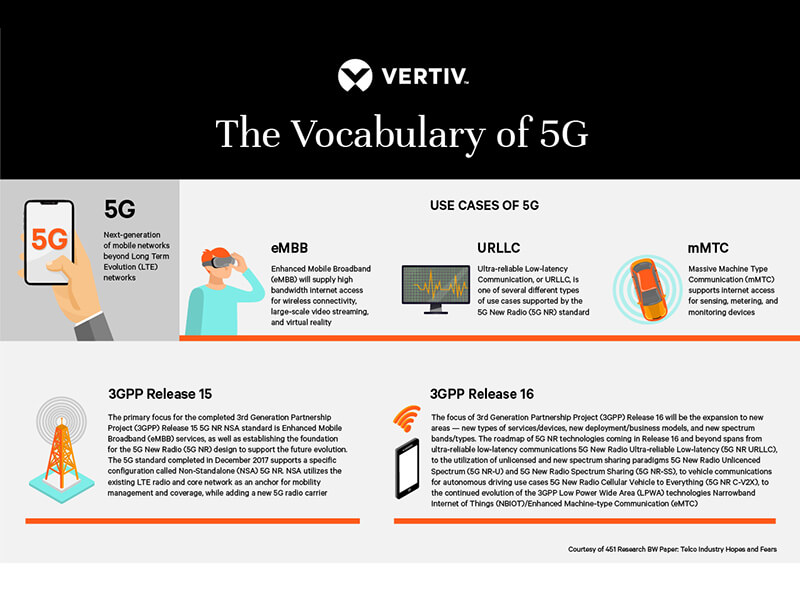Vertiv partnered with 451 Research to get telecom operators’ insights on implementing 5G networks and edge computing. More than 100 telecom operator tech decision makers worldwide outlined which enabling technologies and services will most affect their 5G deployment success over the next decade. Today, Fernando Garcia, Vice President and General Manager Latin America, Vertiv, explores three challenges the report raises for the region:
The Path to 5G Deployment in Latin America
The first phase of 5G rollout in Latin America is expected to begin in 2019, but full adoption will take years.
Most conversations with telecom operators in Latin America revolve around 5G trials and evaluations in major countries like Brazil, Mexico, Colombia, Argentina and Chile. According to our survey with 451 Research, many of these operators plan their first launch in 2020 with significant deployments by 2025.
The report identifies three enablers for progress toward 5G networks in the region:
Upgrading the Current Physical Telecom Infrastructure
Updating the existing physical telecom infrastructure is a critical enabler for 5G deployment in Latin America. That means site acquisition and rights of way will need to be sorted out, and backhaul connectivity will need to be in place, as countries build the infrastructure for 5G.
Physical infrastructure also is critical for multi-access edge computing (MEC, the standard architecture for edge computing as defined by the European Telecommunications Standards Institute’s MEC group). This is an area where Latin America has made significant progress: 40 percent of respondents are deploying MEC infrastructure ahead of 5G deployment. Vertiv is engaged with several such deployments for operators like Telcel, Claro, Vivo (Telefónica) and Tigo (Millicom).
Given the quantity and density of urban areas and dispersion in more rural settings, multi-access edge computing infrastructure relies heavily on remote monitoring and control. Operators in the region have an incentive to identify strategies to optimize their operational costs, and using software and remote monitoring are great ways to achieve those optimizations.
Understanding the Complex Network Infrastructure Regulations
The regulatory environment in Latin America is complex. We have no regional body or regulator that can drive consistency and recommendations for the 5G network infrastructure across the different countries.
Because of this, operators need to prepare for a long process for radio spectrum licenses and municipal permits for antenna deployment. We need to learn from our experience with 3G and 4G deployment, since 5G is going to require even more antenna density.
At the same time, site acquisition, rights of way and backhaul connectivity heavily depend on national and municipal regulations that are often fragmented and inconsistent across the region. This requires a thorough understanding of the regulatory environment to help navigate the system.
Data Center & Network Infrastructure Investments
Latin American data center infrastructure design is a mature and advanced market. As an example, Uptime Institute Tier certification has far more penetration among Latin American facilities than those in the U.S. or EMEA.
In Latin America, the market targets primarily enterprise and B2B companies. On the other hand, 5G is in part a consumer-driven market, and therefore, heavily reliant on revenue per unit, smartphone affordability and the ability for operators to invest CAPEX on telecom networks and infrastructure.
In order to foster a robust data center infrastructure to support 5G, the region will need to invest in network infrastructure, implement energy efficiency measures to boost operators’ profitability, and work on smartphone adoption and internet access for consumers.
The move to 5G in Latin America will require updating the physical infrastructure, gaining an understanding of the complex regulatory environment, and investing in data center and network infrastructure. For assistance with 5G infrastructure planning, contact Vertiv.
To read the full report, visit Vertiv.com/5GReport.






